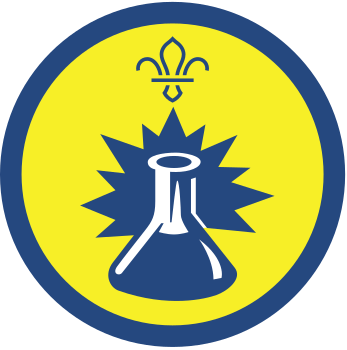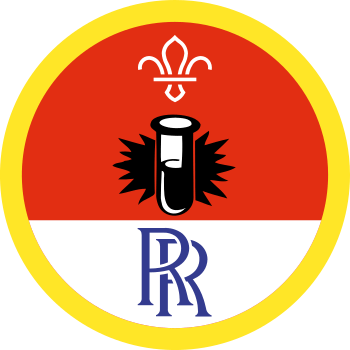
Make some super slime
You’ll need
- Spoons
- Kitchen scales
- Mixing bowls
- Measuring jugs
- Food colouring
- Cornflour
To watch in full screen, double click the video
Before you begin
- Use the safety checklist to help you plan and risk assess your activity. Take a look at our guidance to help you carry out your risk assessment, including examples.
- Make sure all young people and adults involved in the activity know how to take part safely.
- Make sure you’ll have enough adult helpers. You may need some parents and carers to help if you’re short on helpers.
- Check for allergies, intolerances, sensitivities or dietary requirements, then adjust the food items used as needed. This may include making sure there’s no cross-contamination of packaging and no cross-contamination during the storage, preparation, cooking and serving.
- You may need to use separate chopping boards, equipment and utensils, such as tongs or toasters, for different dietary requirements, allergies and foods.
- If you’re unsure, check with the young person and their parents or carers. You can check with the adult directly if it’s a volunteer or helper.
- Some people may not like certain food textures and that’s OK. People don’t need to touch or use all the ingredients if they don’t want to, and no-one should be made to try if they don’t want to. You can try to find an alternative for them.
Running this activity
- Gather everyone together and ask if anyone knows what makes something a solid, a liquid or a gas.
- Explain that we call these ‘states’. What properties does each state have? How can you tell which state a material is in? One way is by looking at the shape it makes: solids have a fixed shape, while liquids take on the shape of the container they are in. How many solids, liquids and gases can you name?
- Everyone should think about slime. Is it a liquid or a solid? Think about the characteristics that show it could be either.
Making the slime
- Everyone should get into small groups or pairs.
- Use scales to measure out 250g of cornflour, then pour it into a mixing bowl.
- Next, choose the colour you want for the slime by adding a couple of drops of food colouring to the cornflour.
- Measure out 250ml of water, then slowly pour 150ml into the cornflour, stirring the whole time. Make sure the water is completely mixed into the cornflour, with no dry areas left.
- The mixture needs to be the consistency of honey. If it’s not there yet, keep pouring in water and mixing. You may not need all of the water so make sure you don’t add too much.
Testing the slime
- Once it’s ready, let play with their slime to test which state of matter it is: liquid or solid. Does it feel like other liquids or solids when you touch it? Does it change or hold its shape? Can you pick it up and make it into a shape? What happens to that shape when you stop touching it?
- Everyone should discuss the way that slime seems to have properties similar to both liquids and solids. This is called a non-Newtonian fluid, named after Sir Isaac Newton, who developed a law that classified liquids by how fast they flow.
- Explain that liquids like water flow fast out of a tap is called a normal or Newtonian fluid. What would happen if you put slime in a tap and turned it on? Would it come out like water?
- Tell everyone that Slime is a non-Newtonian fluid because it behaves like either a liquid or a solid depending on how much pressure you apply to it. When you poke and roll the slime, it holds its shape under the pressure of your hands. If you leave the slime untouched, it acts like a liquid because it isn’t under any pressure.
- Now, return to their slime and test it under different pressures, to see how it behaves like both a solid and a liquid. Lots of pressure makes the particles within it lock together and makes it solid. Little pressure makes the particles within it flow over each other, keeping it floppy and liquid.
Reflection
This activity was about learning new skills. Why might the states of materials be important to know about? (Some can be dangerous, like quicksand, another non-Newtonian fluid.) Did you learn anything today that you didn’t already know? What other experiments would you like to do?
This activity was also about working in a team. How well did your team work together to make slime? Did you follow all the instructions? Can you think of any other non-Newtonian fluids? (quicksand, peanut butter, custard, paint). How could you make these materials behave as solids? How could you ensure they stay in their liquid form?
Safety
All activities must be safely managed. You must complete a thorough risk assessment and take appropriate steps to reduce risk. Use the safety checklist to help you plan and risk assess your activity. Always get approval for the activity, and have suitable supervision and an InTouch process.
- Science
Supervise young people, and only do science activities that are advised and age appropriate for your section. Test activities first, to make sure you’re confident you can lead them safely. Use protective clothing where necessary.
Make a giant batch of slime with the whole group and see if you can walk across it without sinking. Watch how non-Newtonian fluids react to a vibrating surface by wrapping a speaker in cling film and placing the mixture on top. Play different types of music at varying volumes, and see how the slime reacts.
If there are members of the team that might struggle with the fine motor skills involved in measuring and mixing, ensure they are with others that can support them. Offer disposable gloves to anyone who finds the sensory element of this activity challenging so they can still experience the changing states of the slime.
All Scout activities should be inclusive and accessible.
Watch how non-Newtonian fluids react to a vibrating surface by wrapping a speaker in cling film and placing the mixture on top. Play different types of music at varying volumes, and see how your slime reacts.

